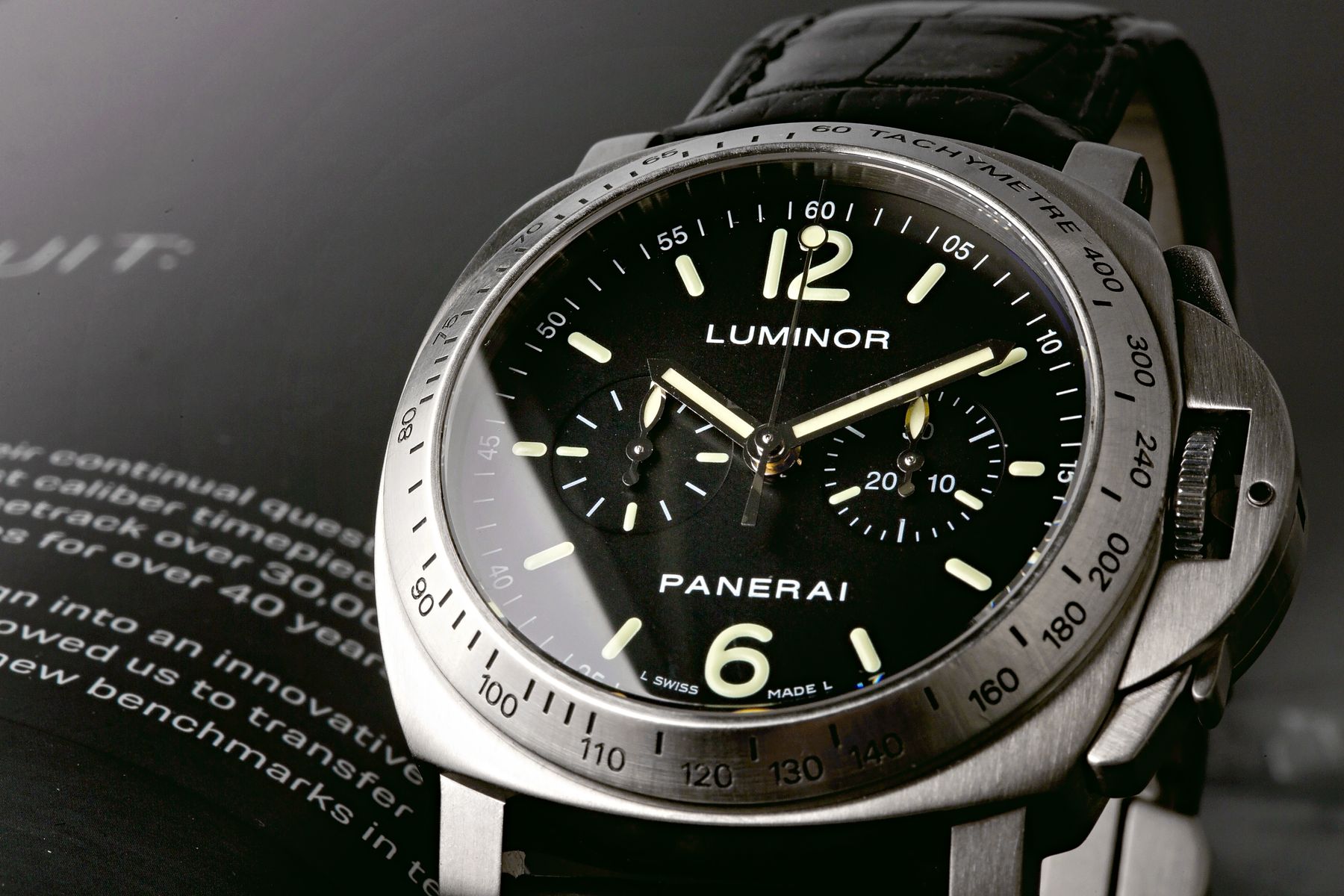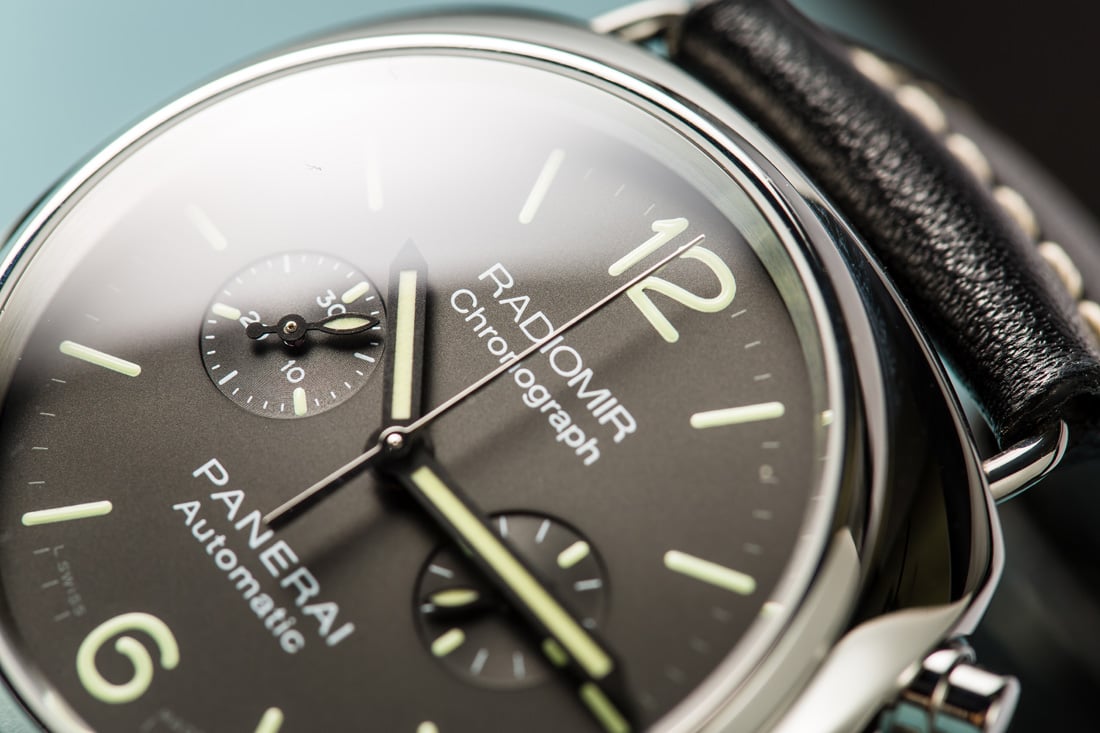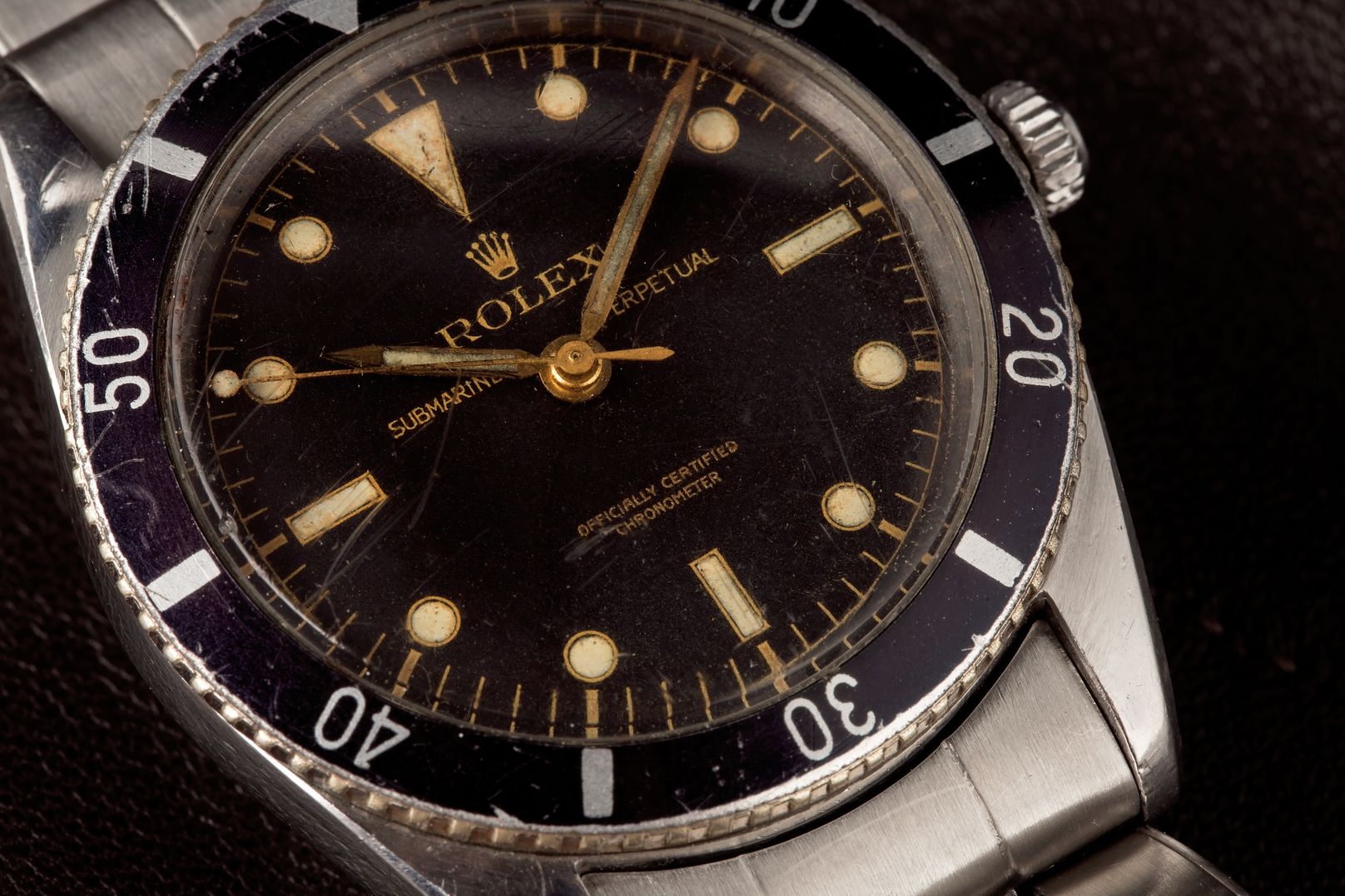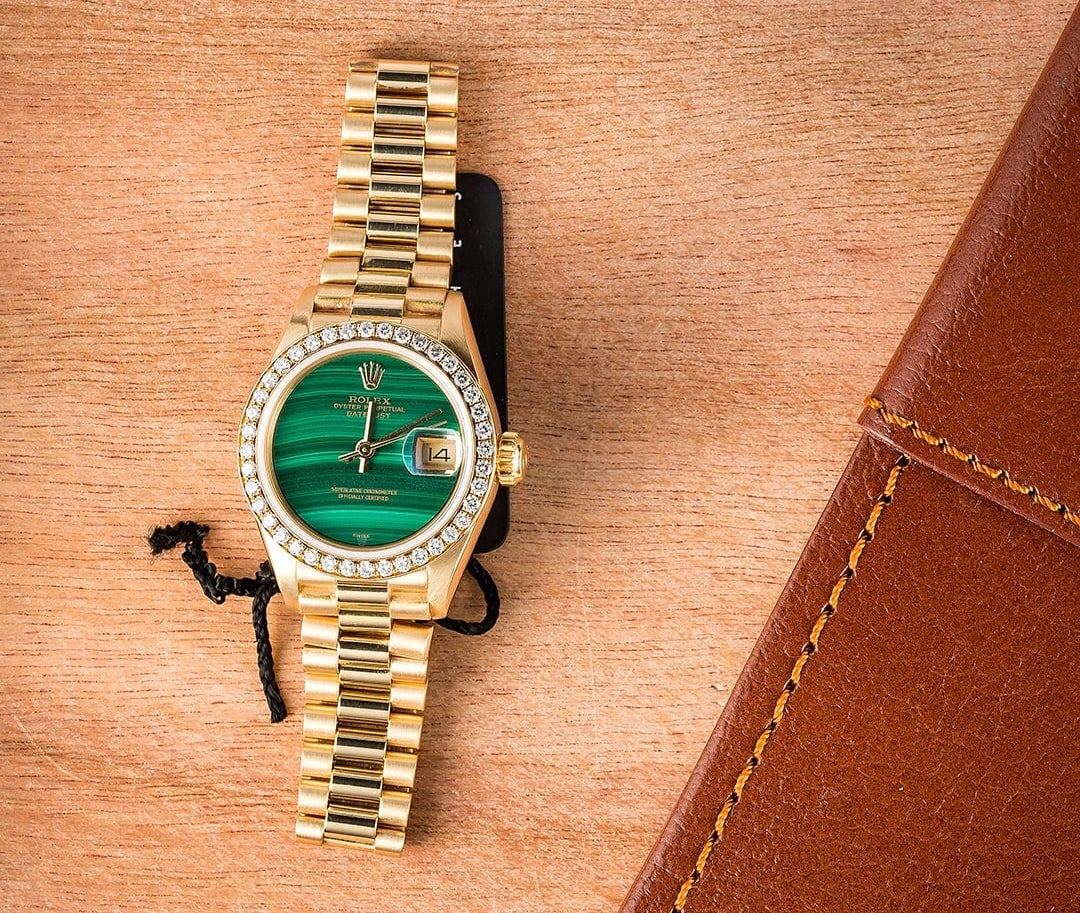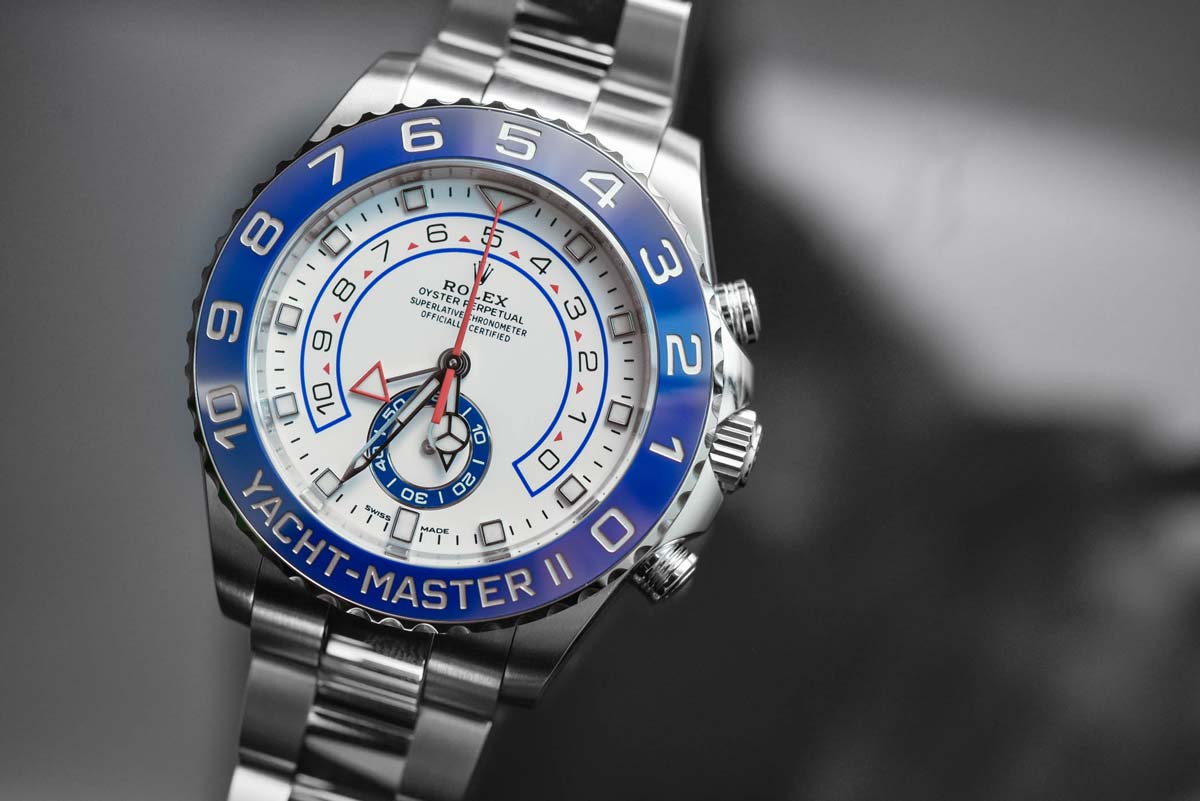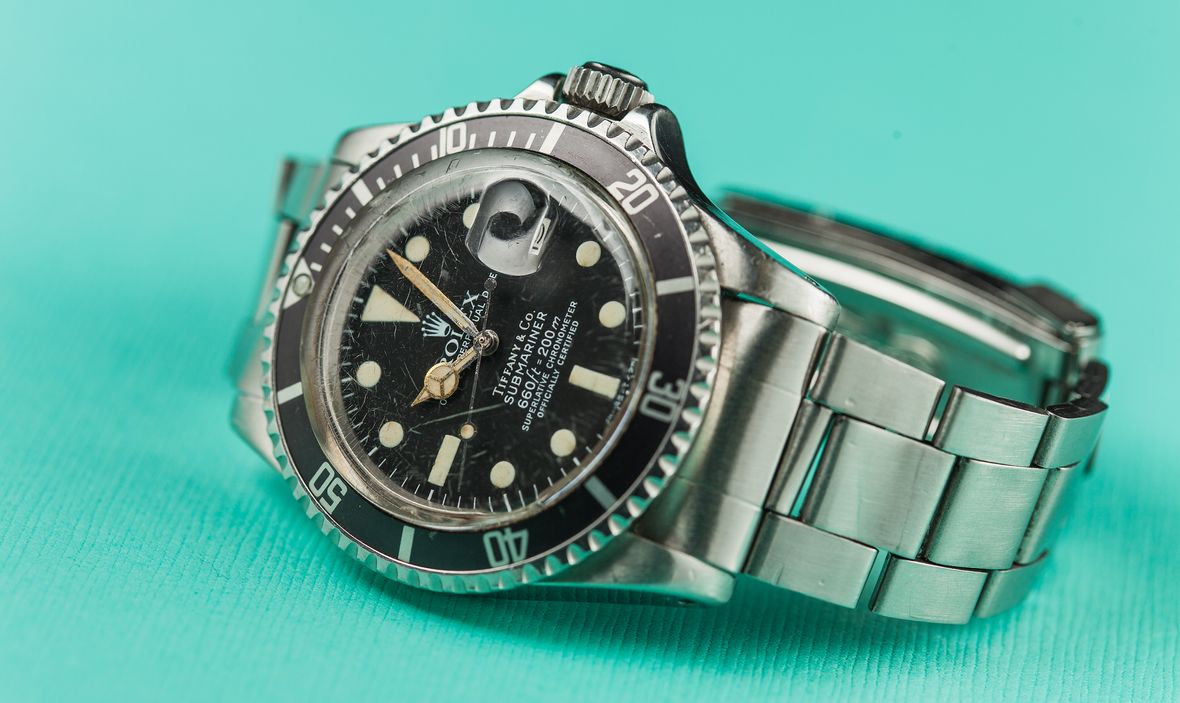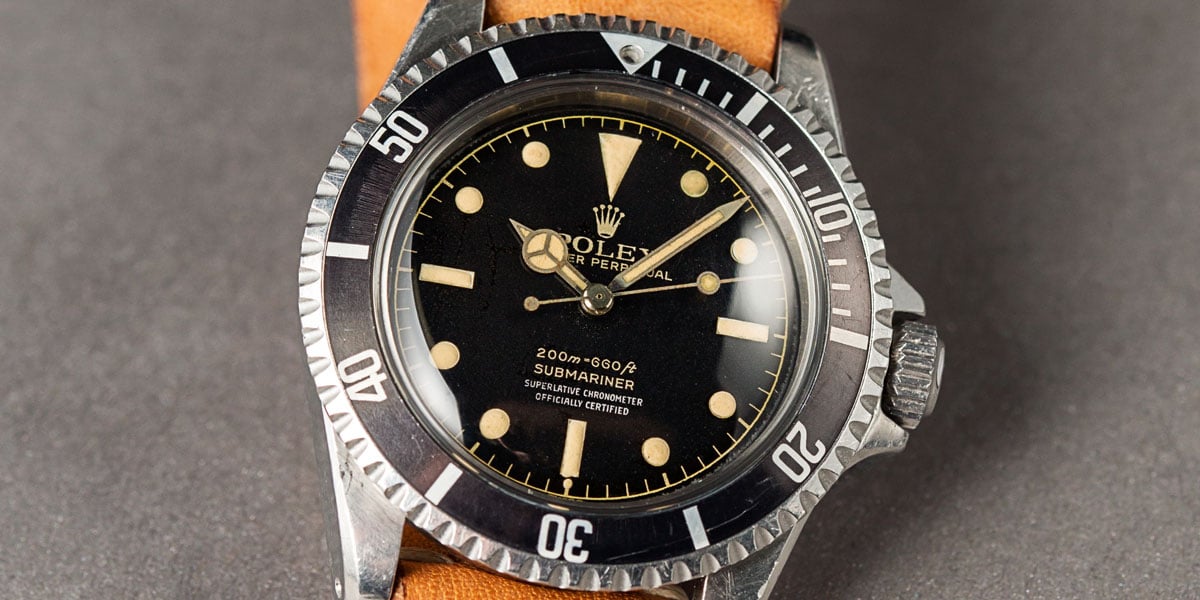Okay, I’ll admit, these are not the most elegant labels when discussing luxury watches. But if you hang out with a Paneristi long enough, you’re bound to hear the terms “sausage” and “sandwich” being used when discussing Panerai watches and their dials. So what exactly are Panerai sandwich and sausage dials? These names refer specifically to how luminous material is applied to a Panerai watch dial. Sandwich dials have recessed lume while sausage dials include luminous paint that curves above the dial.
Panerai watches are some of the most recognizable watches in the market, characterized by distinctive cushion-shaped cases and stark dials. If you look across the entirety of Panerai’s collection, you’ll quickly see that the vast majority of the dials are dark and feature a mix of stick and oversized Arabic numeral hour markers. The dials are often simple in execution with just a pair of hands at the center, sometimes accompanied by a running seconds sub-dial, and occasionally, there’s a date window too.
It’s often said that all Panerai watches look almost identical, and it’s hard to tell the difference between one model and the next. However, upon closer inspection, it’s clear that the variances lie in the small, yet important details — such as sandwich dials versus sausage dials.
Let’s dig in, shall we?
Click here for out Ultimate Buying Guide on Panerai Watches.
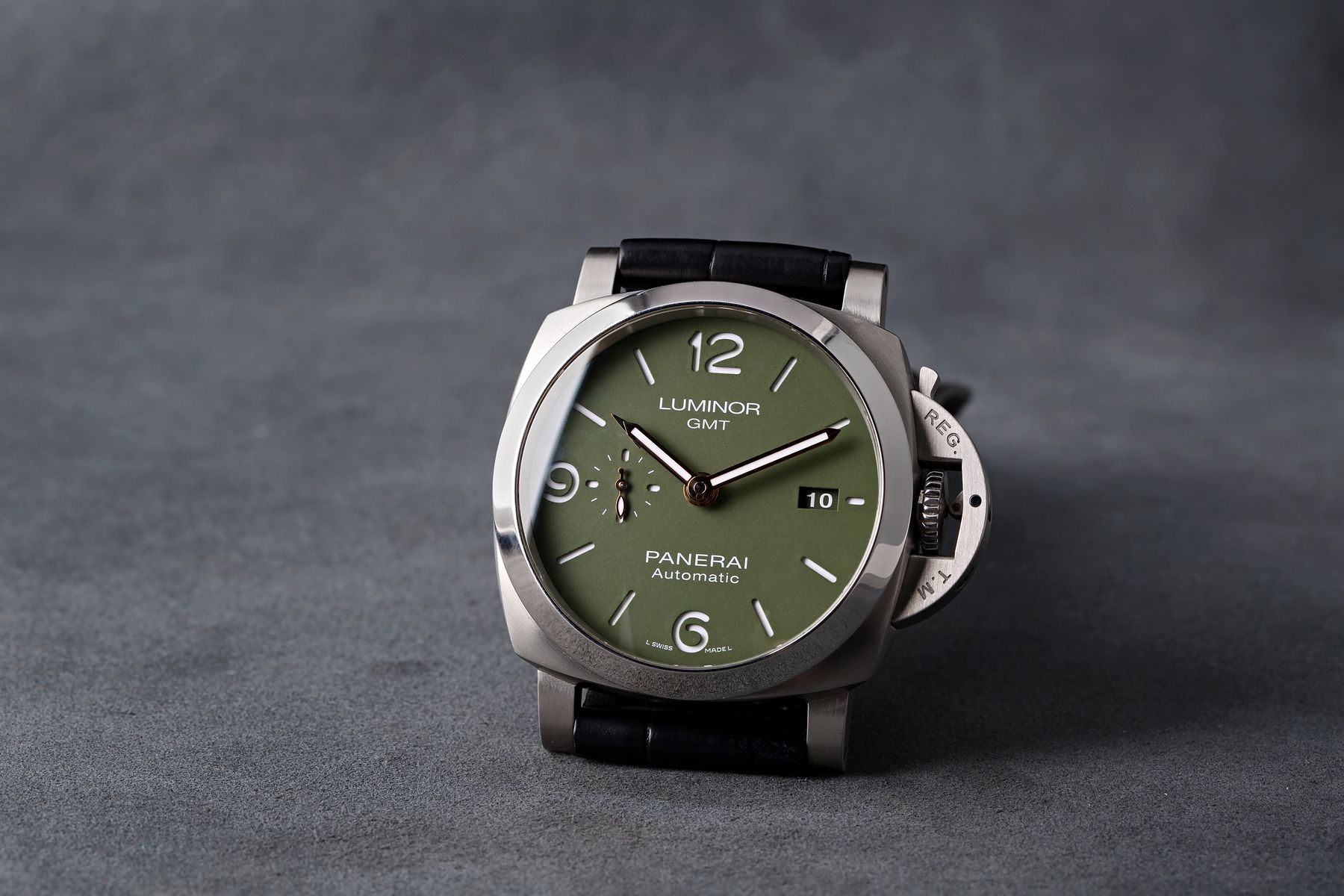
Brief History of Panerai and the Importance of Lume
The origins of Officine Panerai are far from the luxury Swiss watch brand we know today – it was founded in 1860 in Florence, Italy by Giovanni Panerai as a watch store and workshop. In the early-1900s, the founder’s grandson, Guido Panerai, transitioned the family business into a supplier of precision instruments for the Italian Royal Navy or Regia Marina. And in 1916, Panerai filed a patent for “Radiomir,” a self-luminous radium-based paint that would make the dials of the company’s military instruments shine brighter for the Italian Navy.
Using Rolex-supplied timepieces powered by Cortebert pocket watch movements, Panerai developed diving watches for the frogmen of the Italian Navy’s secret underwater program. These watches would later become the Panerai Radiomir models we know with today, featuring large cushion-shaped cases, wire lugs, highly luminous dials, oversized crowns, and extra-long straps. The watches were continuously modified and upgraded to keep up with the rigorous needs of the combat divers.
For example, Giuseppe Panerai (Guido’s son) altered the structure of the dial to have overlapping disks. The top disk, which was made from anodized aluminum, featured cutouts for the hour markers – four Arabic numerals and eight batons – to allow the radium paste that was applied to the bottom disks to shine through. The Panerai sandwich dial was born.
Given how important in-the-dark legibility was for the military, Panerai continued to focus on the luminous material used on its watch dials. By the late-1940s, the company registered the more neutral-sounding “Luminor” name to move away from using “Radiomir” due to the growing fear of radium and radioactivity by the public. In the mid-1960s, Panerai replaced all radium-based lume with tritium-based lume — just like the rest of the watch industry. Self-luminous tritium is still radioactive but significantly safer than radium.
Of course, these days, Panerai uses modern-day (and non-reactive) Grade A Swiss Super-LumiNova on their dials. Radiomir and Luminor are no longer used as luminescence names but now serve as the titles of the two most important Panerai watch models in the brand’s current catalog.
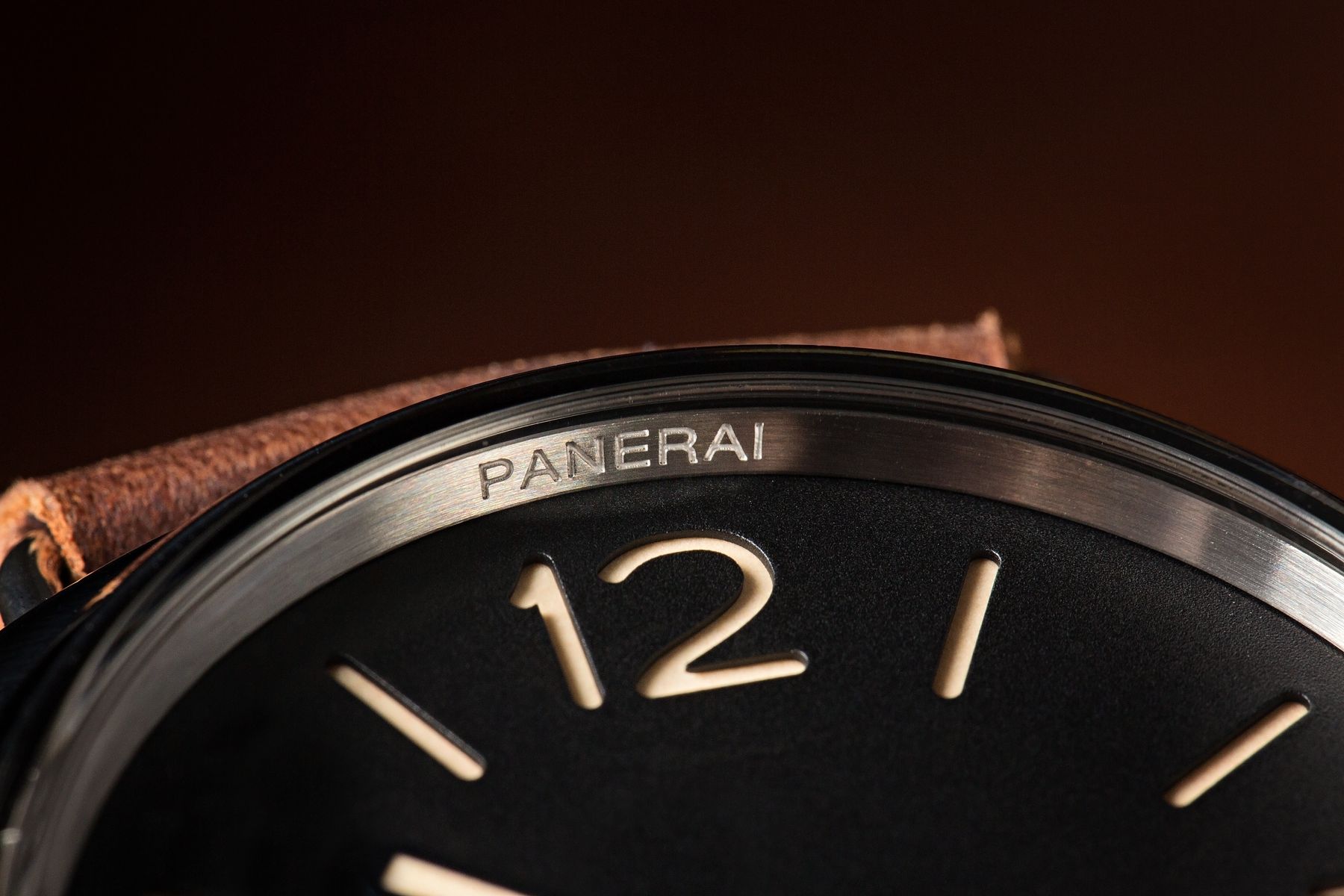
Panerai Sandwich Dials
As its name suggests, sandwich dials utilize a layering technique. This is by no means exclusive to Panerai, but the Florentine watch brand did opt for sandwich dials early on in its history as a way to create highly luminescent watch faces. According to Panerai, its vintage military watches were so luminous that the Italian Navy frogmen that wore them had to sometimes cover the dials with mud to prevent being spotted!
Essentially, a Panerai sandwich dial includes two separate disks where the bottom layer holds the luminescent material in recessed indexes while the top layer has index cutouts to allow the luminescence to glow through. When looking at a Panerai sandwich dial, you’ll notice the cool stencil effect immediately.
It’s worth noting that the earliest examples of Panerai sandwich dials used three layers: the highest plate had perforations, the middle plate was transparent Perspex, and the bottom plate was solid and coated in luminous paste. However, this was replaced by the two-layer construction we’re familiar with today.
Much to the chagrin of Panerai enthusiasts, Panerai seems to be moving away from sandwich dials on most of their current watches, saving this technique for select releases instead.
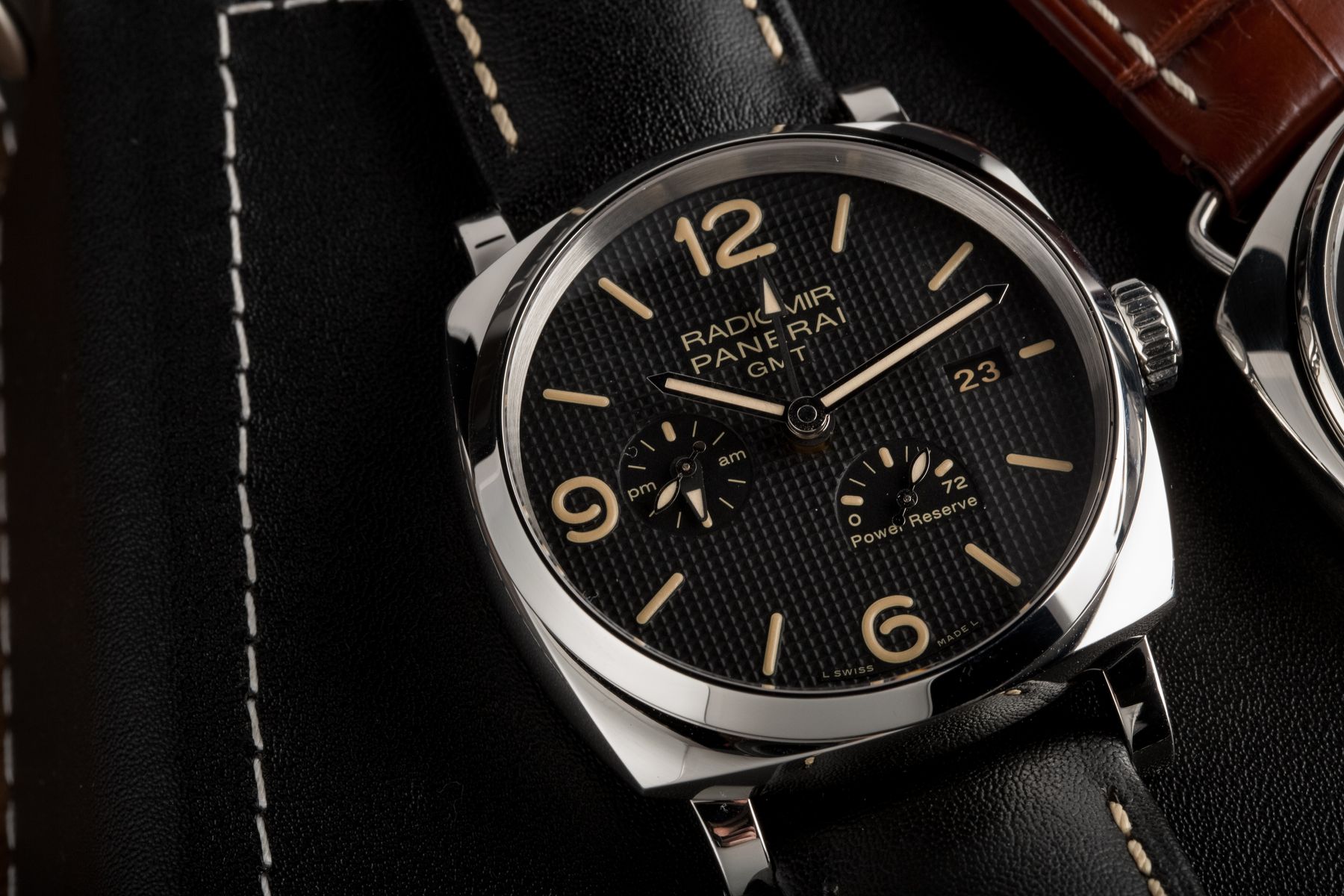
Panerai Sausage Dials
In contrast to the sunken indices of Panerai sandwich dials, Panerai sausage dials have painted hour markers that protrude slightly above the dial. In some models, the indexes were first etched into the dial and then filled in with luminescent material. In other versions, the lume was painted directly onto a flat surface.
Regardless of technique, the result is curvier numerals and stick markers that swell and curve on the dial, which ultimately made way for the (unfortunate) sausage nickname. These are also referred to as Panerai painted dials if you prefer to use that term (as I do).
Panerai painted dials are not to be confused with Panerai printed dials, which have flat surfaces. So remember, the next time you’re browsing through different Panerai watches, trying to decide which you like best, get a closer look at the dial and see if it’s a sandwich, sausage (a.k.a. painted), or printed one. That seemingly small detail may make all the difference in the overall look of the watch.
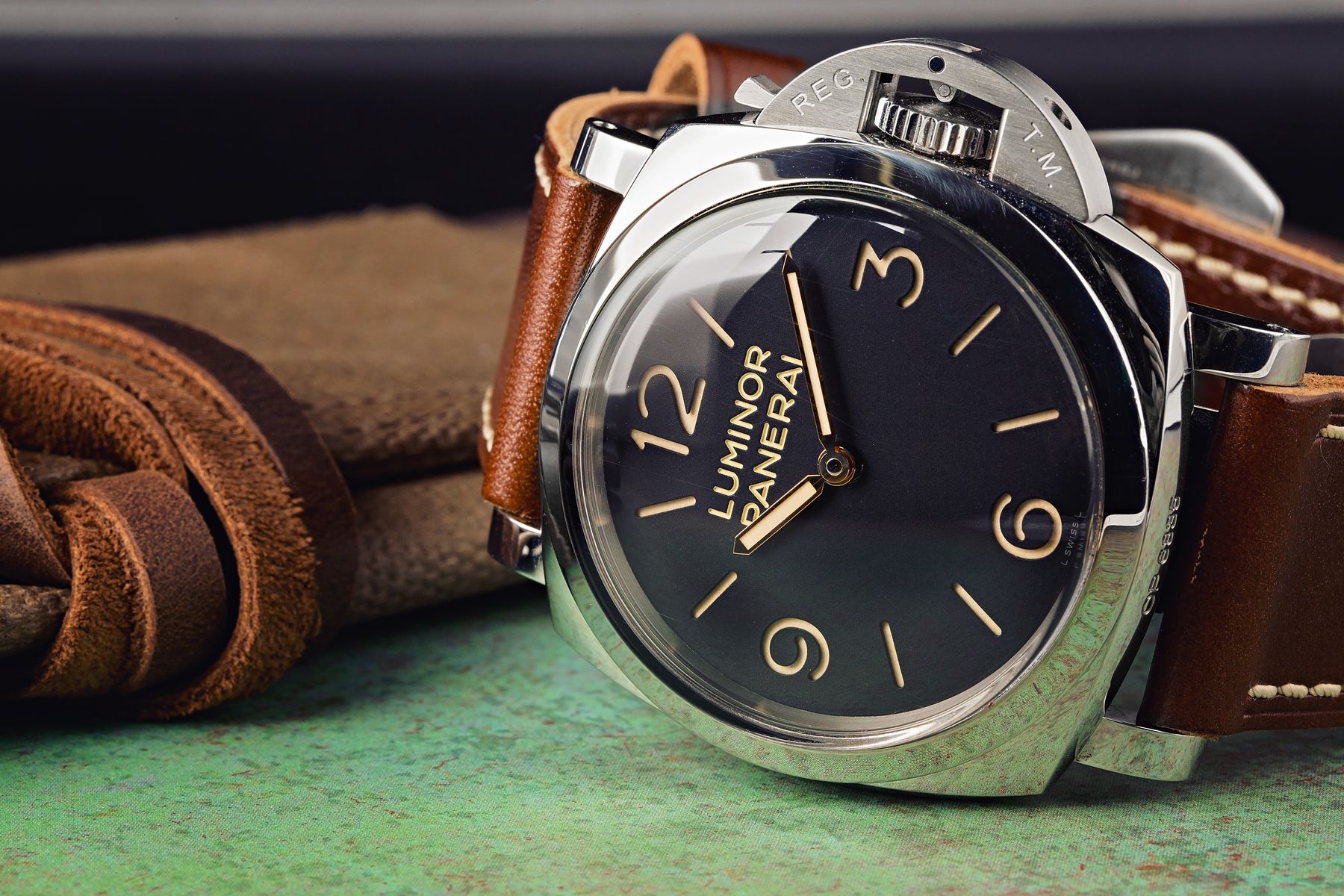
Sandwich Or Sausage, Which Panerai Dial To Choose?
Place a Panerai sandwich and sausage dial next to each other, and you’ll spot the difference immediately. Some prefer the sandwich dial — both for its style, and because it more closely resembles the dials fitted to early Panerai watches. Yet, fans of the Panerai sausage dial say that this design offers better legibility from all angles since there’s no sunken-in effect. The curvature of the crystal and the recessed indexes can sometimes cause viewing distortion.
Both dial designs offer distinct looks, and both have a place in Panerai’s history. I’ve always liked stencil-style typography so I gravitate towards Panerai sandwich dials. However, I have nothing against Panerai sausage dials (except for the dreadful nickname) since they’re quite good looking too.
Which Panerai dial do you prefer? Drop us a comment below.
